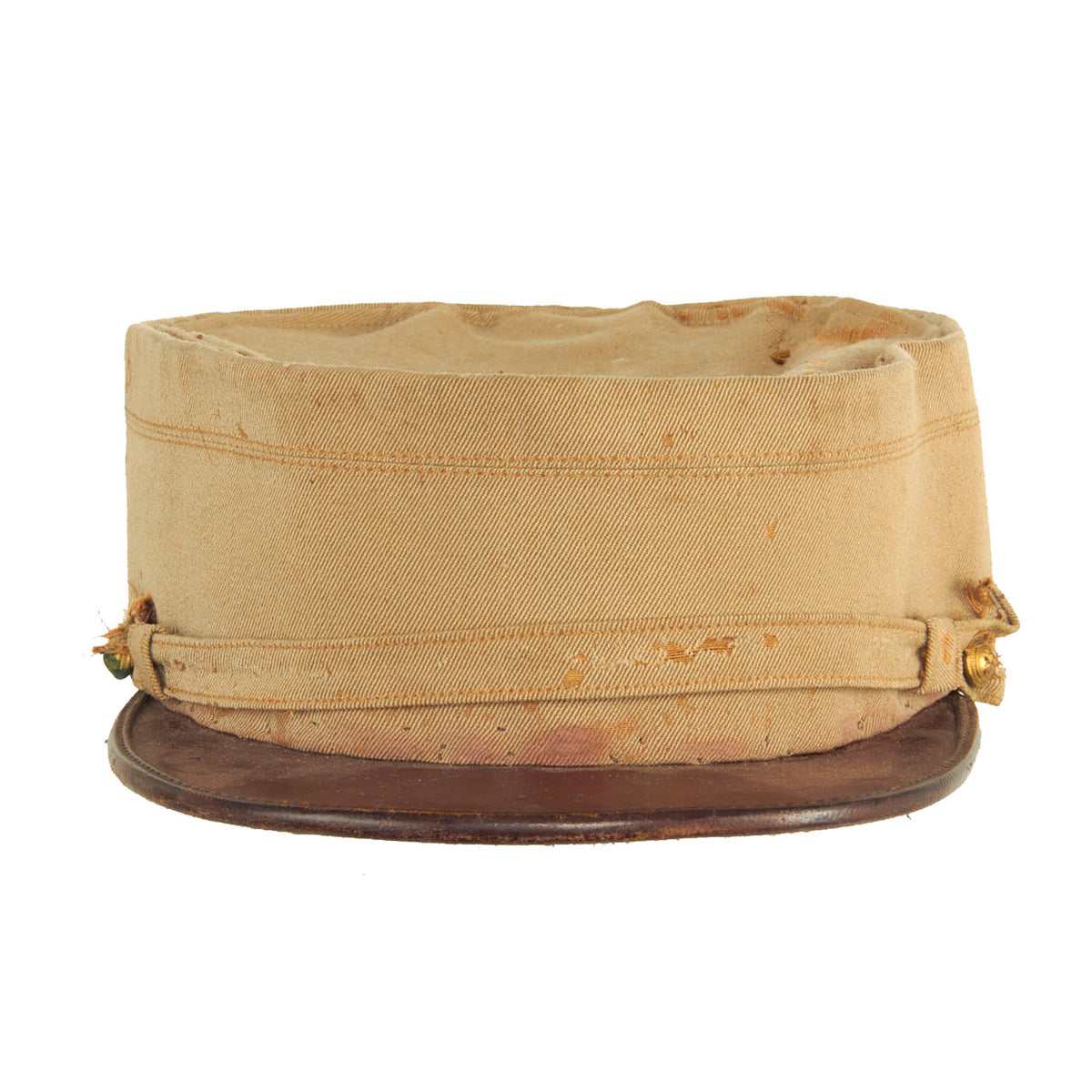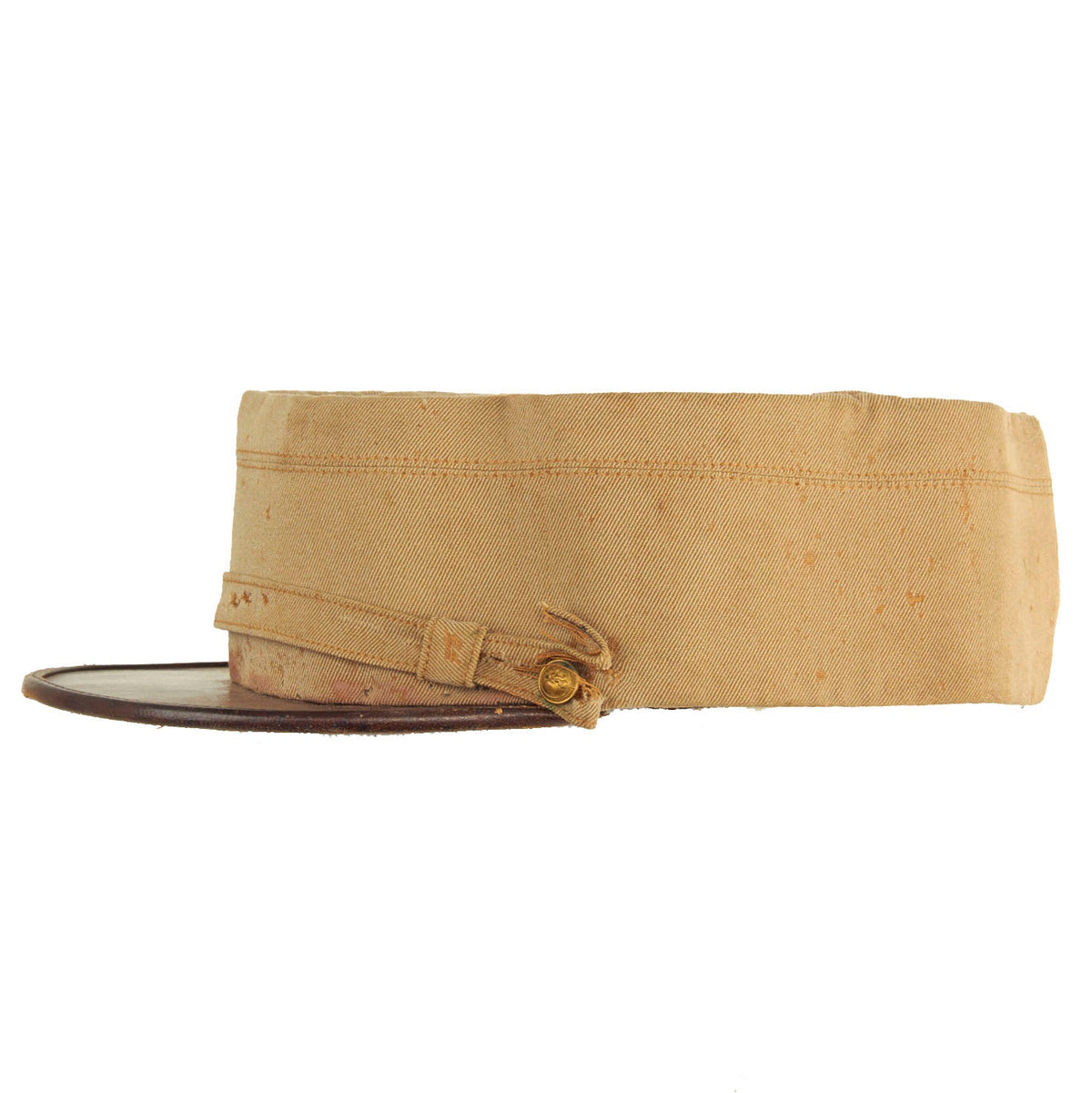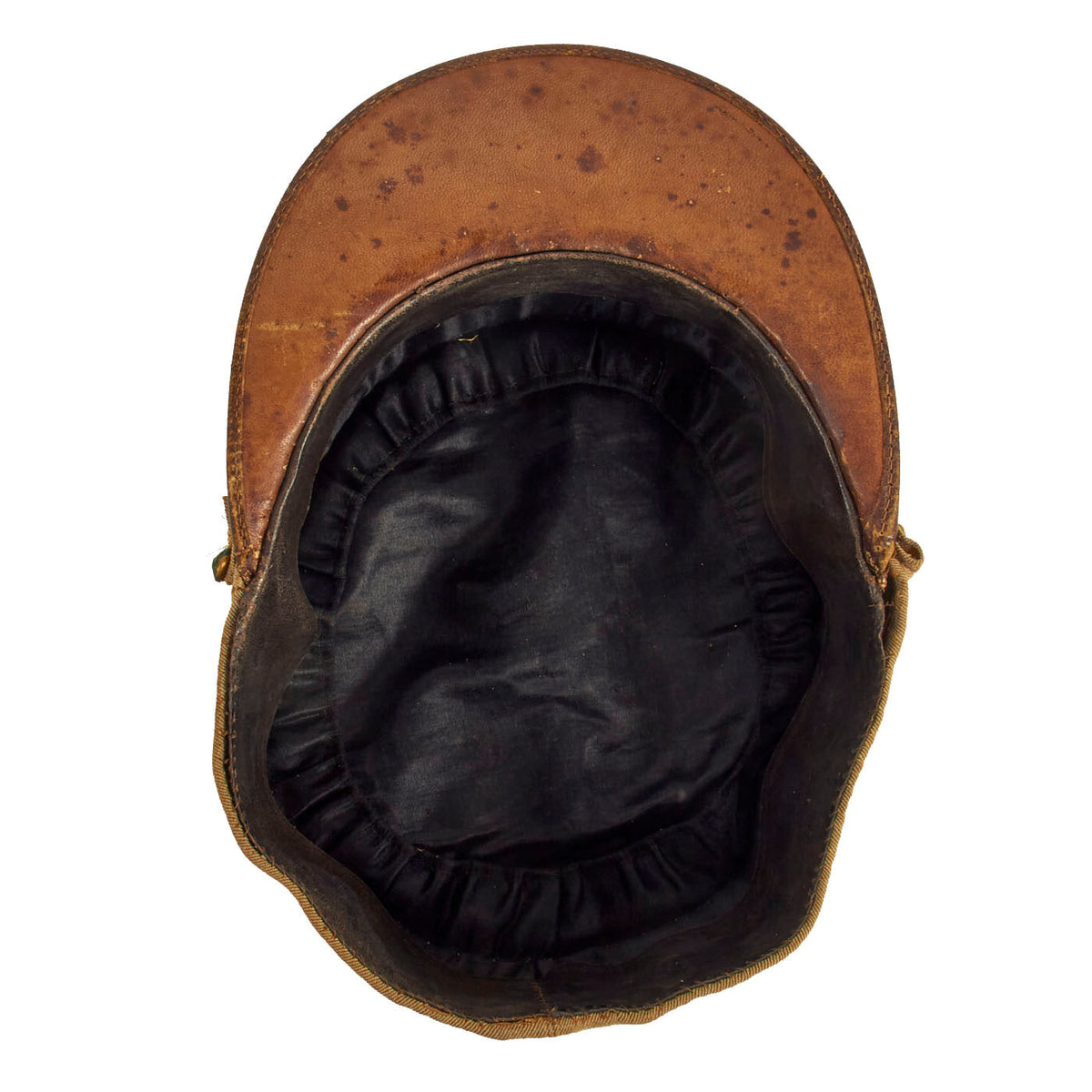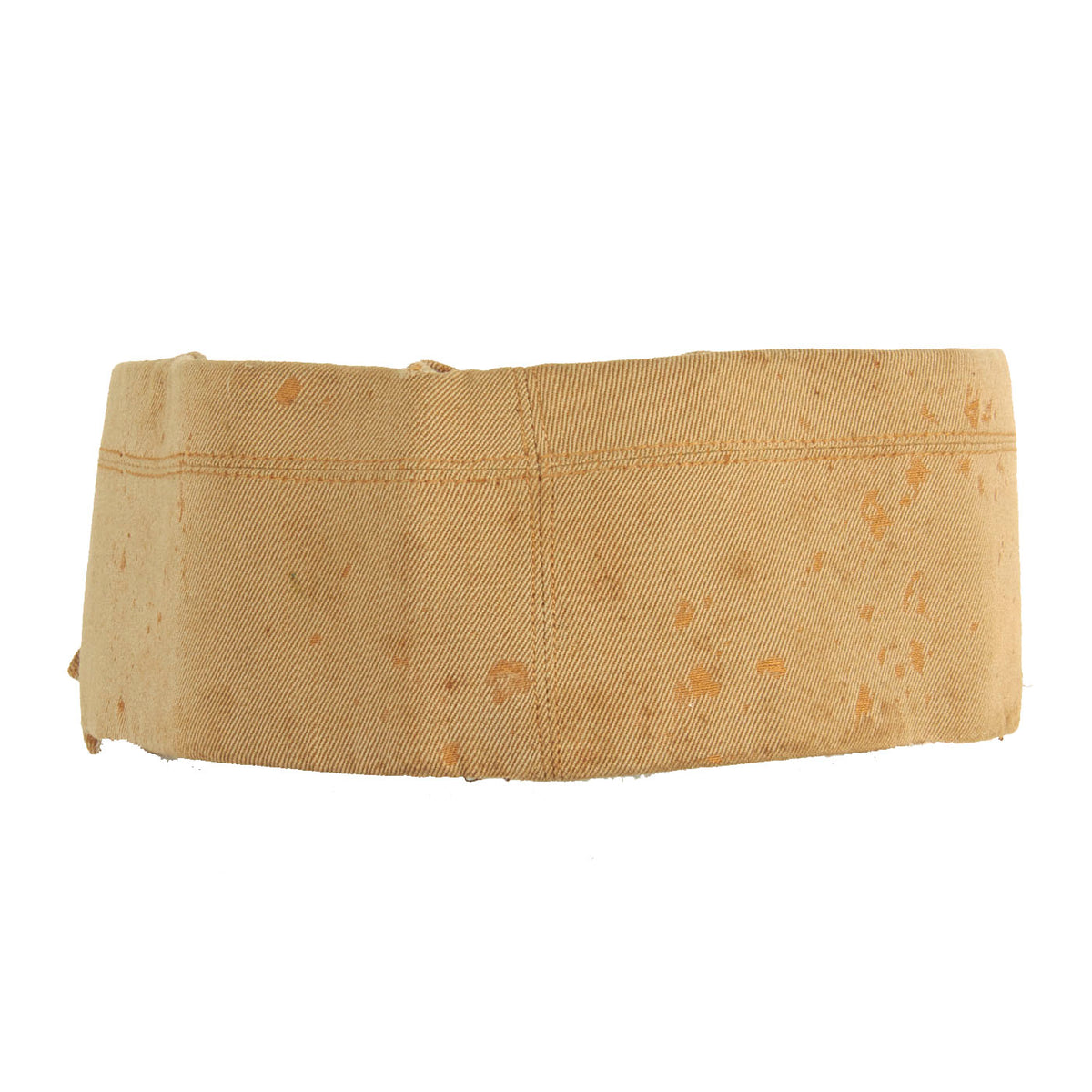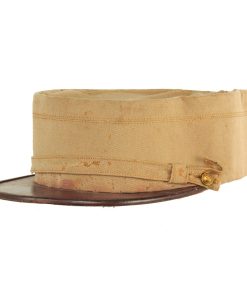Original French WWI Era French Foreign Legion Khaki M-1915 Kepi Original Items
$ 295,00 $ 118,00
Original Item: Only One Available. From its foundation until World War I the Foreign Legion normally wore the uniform of the French line infantry for parade with a few special distinctions. In the early 20th century the legionnaire wore a red kepi with blue band and piping, dark blue tunic with red collar, red cuff patches, and red trousers. Distinctive features were the green epaulets (replacing the red of the line) worn with red woolen fringes; plus the embroidered Legion badge of a red flaming grenade, worn on the kepi front instead of a regimental number. In the field a light khaki cover was worn over the kepi, though this one was manufactured in the khaki color and was more than likely a private purchase. During the initial months of World War I, Foreign Legion units serving in France wore the standard blue greatcoat and red trousers of the French line infantry, distinguished only by collar patches of the same blue as the capote, instead of red. After a short period in sky-blue the Foreign Legion adopted khaki, in common with other units of the Armée d’Afrique, with steel helmets, from early 1916.
This is a very nice example of a Khaki kepi. The cap is fitted with a same khaki color chinstrap which is unfortunately almost completely torn through on the button holes and is literally held on by threads around the buttons. Original Sweatband is intact, and showing signs of wear and age with partial detach and thread loss. Polished Cotton lining is intact as well, and strangely enough, does not bear a maker stamp. Visor is of high quality brown leather, which shows signs of cracking and crazing from age. The original visor binding is intact. Size of the cap is roughly a 7 ⅛. The inside of the sweatband, located towards the rear, is a last name but is extremely difficult to read the script.
A very nice example that comes more than ready for further research and display!
The annexation of Alsace and Lorraine by Germany in 1871 led to numerous volunteers from the two regions enlisting in the Foreign Legion, which gave them the option of French citizenship at the end of their service.
With the declaration of war on 29 July 1914, a call was made for foreigners residing in France to support their adopted country. While many would have preferred direct enlistment in the regular French Army, the only option immediately available was that of the Foreign Legion. On one day only (3 August 1914) a reported 8,000 volunteers applied to enlist in the Paris recruiting office of the Legion.
In World War I, the Foreign Legion fought in many critical battles on the Western Front, including Artois, Champagne, Somme, Aisne, and Verdun (in 1917), and also suffered heavy casualties during 1918. The Foreign Legion was also in the Dardanelles and Macedonian front, and was highly decorated for its efforts. Many young foreigners volunteered for the Foreign Legion when the war broke out in 1914. There were marked differences between the idealistic volunteers of 1914 and the hardened men of the old Legion, making assimilation difficult. Nevertheless, the old and the new men of the Foreign Legion fought and died in vicious battles on the Western front, including Belloy-en-Santerre during the Battle of the Somme, where the poet Alan Seeger, after being mortally wounded by machine-gun fire, cheered on the rest of his advancing battalion.
Fast Shipping with Professional Packaging
Thanks to our longstanding association with UPS FedEx DHL, and other major international carriers, we are able to provide a range of shipping options. Our warehouse staff is expertly trained and will wrap your products according to our exact and precise specifications. Prior to shipping, your goods will be thoroughly examined and securely secured. We ship to thousands clients each day across multiple countries. This shows how we're dedicated to be the largest retailer on the internet. Warehouses and distribution centres can be located throughout Europe as well as the USA.
Note: Orders with more than one item will be assigned a processing date depending on the item.
Before shipping before shipping, we'll conduct a thorough inspection of the items you have ordered. Today, the majority of orders will be delivered within 48 hours. The delivery time will be between 3-7 days.
Returns
The stock is dynamic and we cannot completely manage it because multiple stakeholders are involved, including our factory and warehouse. So the actual stock may alter at any time. It's possible that you may not receive your order once the order has been made.
Our policy is valid for a period of 30 days. If you don't receive the product within 30 days, we are not able to issue a refund or an exchange.
You can only return an item if it is unused and in the same state as the day you received it. You must have the item in its original packaging.
Related products
Uncategorized
Uncategorized
Armoured Fighting Vehicles of the World: AFVs of World War One (Hardcover Book) New Made Items
Uncategorized
Uncategorized
Uncategorized
Australian WWII Owen MK1 Machine Carbine SMG Custom Fabricated Replica with Sling Original Items
Uncategorized
Uncategorized
Uncategorized
Uncategorized
Uncategorized
Uncategorized
Uncategorized
Uncategorized
Uncategorized
Uncategorized
Uncategorized
Angolan Rebel 1970s era 60mm Inert Display Mortar from Angolan Civil War Original Items

